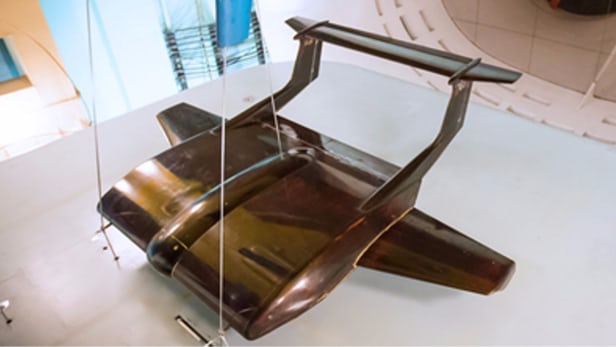
Breaking News
 Doug Casey on the Death of Privacy… and What Comes Next
Doug Casey on the Death of Privacy… and What Comes Next
 The Idiocy of Using a $200 Billion Navy to Enforce a 140× Cocaine Premium
The Idiocy of Using a $200 Billion Navy to Enforce a 140× Cocaine Premium
 #608: The First Half of the Decade
#608: The First Half of the Decade
Top Tech News
 Kawasaki's four-legged robot-horse vehicle is going into production
Kawasaki's four-legged robot-horse vehicle is going into production
 The First Production All-Solid-State Battery Is Here, And It Promises 5-Minute Charging
The First Production All-Solid-State Battery Is Here, And It Promises 5-Minute Charging
 See inside the tech-topia cities billionaires are betting big on developing...
See inside the tech-topia cities billionaires are betting big on developing...
 Storage doesn't get much cheaper than this
Storage doesn't get much cheaper than this
 Laser weapons go mobile on US Army small vehicles
Laser weapons go mobile on US Army small vehicles
 EngineAI T800: Born to Disrupt! #EngineAI #robotics #newtechnology #newproduct
EngineAI T800: Born to Disrupt! #EngineAI #robotics #newtechnology #newproduct
 This Silicon Anode Breakthrough Could Mark A Turning Point For EV Batteries [Update]
This Silicon Anode Breakthrough Could Mark A Turning Point For EV Batteries [Update]
 Travel gadget promises to dry and iron your clothes – totally hands-free
Travel gadget promises to dry and iron your clothes – totally hands-free
 Perfect Aircrete, Kitchen Ingredients.
Perfect Aircrete, Kitchen Ingredients.
 Futuristic pixel-raising display lets you feel what's onscreen
Futuristic pixel-raising display lets you feel what's onscreen
Russian blended wing aircraft concept keeps on the down low

A new Russian concept aircraft is designed to fly high by staying down low. Russia's Central AeroHydrodynamic Institute named after N.E. Zhukovsky (TsAGI) is developing a new heavy transport aircraft for intercontinental routes that carries up to 500 tonnes (492 tons) of cargo in a blended wing that combines the wing and the fuselage of the aircraft, yet only reaches an altitude of between three and 12 m (10 and 40 ft) over water and land.
The low-flying leviathan is what is known in aviation circles as a Ground Effect Vehicle (GEV). A GEV is a form of aircraft that uses short, wide wings to trap a layer of air between the undersurface of the aircraft and the ground, producing vortices and downdraughts that generate more lift and less drag at very low altitudes, which allows the craft to carry heavy loads with less fuel. Here, the effect is produced by wings that blend into the body of the aircraft to not only create more lift, but also provide more interior space for cargo.

If it ever reaches the production stage, the TsAGI transport will be capable of taking off and landing on conventional runways and will carry standardized containers that would be loaded inside the wings through flap doors on the leading edge of the body and wing. According to the designers, the center section will hold the cockpit and a tank of cryogenic liquefied natural gas. This unconventional fuel was selected because it's lighter and burns cleaner, yet with much higher efficiency and safety than standard aviation fuel.

 A Put Up Or Shut Up Moment
A Put Up Or Shut Up Moment

